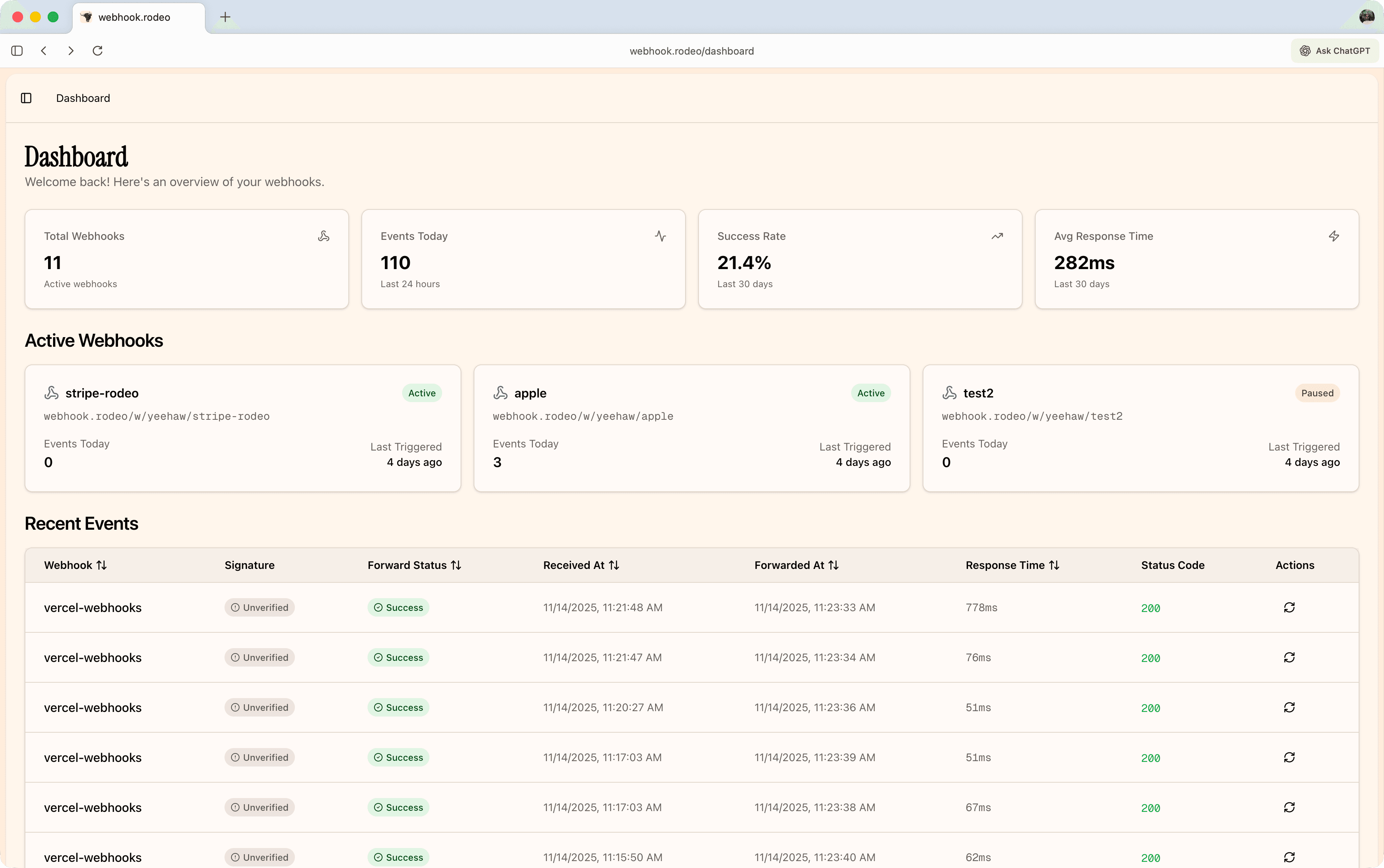Welcome to webhook.rodeo
webhook.rodeo is your trusted partner for wrangling webhooks. It's a platform for capturing, inspecting, forwarding, and debugging webhooks—without writing brittle glue code or maintaining custom infrastructure. It sits between third-party providers and your application, giving you reliability, visibility, and full control.
Whether you're building integrations, debugging third-party events, or need a reliable forwarding layer for your event-driven architecture, we make webhooks simple, stable, and observable.

Webhooks are painful
Webhooks seem simple—“receive JSON at a URL”—but building robust pipelines is harder than it looks:
- Unpredictable timing: Events arrive whenever providers send them.
- No visibility: Failures often go unnoticed until something breaks downstream.
- Signature verification boilerplate: Every provider uses different HMAC formats.
- Local development pain: Tunnels drop, logs disappear, payloads get lost.
- Silent failures: Providers retry inconsistently, sometimes not at all.
- Scaling complexity: Keeping endpoints fast and resilient requires real infra.
Webhook Rodeo removes this friction with a stable, observable pipeline built for developers.
Why use Webhook Rodeo
Webhook Rodeo gives you:
- Visibility: Every event is logged, searchable, inspectable, and replayable.
- Reliability: Automatic retries, delivery tracking, and response monitoring.
- Security: Built-in signature verification and secret management.
- Flexibility: Forward to your API, queues, or Slack channels.
- Faster iteration: Test integrations without managing tunnels or temporary servers.
What webhook.rodeo does
Webhook Rodeo gives you a unique webhook URL for each integration:
https://webhook.rodeo/w/your-username/github-webhooks
When a webhook hits your URL, we:
- Capture everything — headers, body, IP address, timestamp
- Verify signatures — optional HMAC validation
- Log the event — full payload storage for debugging
- Forward reliably — delivery with automatic retries
- Track delivery — status codes, response bodies, response times
- Enable replay — resend any event with one click
What you can build
- Stripe payments into your backend
- Clerk user events into onboarding workflows
- GitHub PR events into CI/CD or automation
- Shopify events into inventory or fulfillment systems
How it works under the hood
When a webhook arrives at your Webhook Rodeo URL, here's what happens:
-
Instant capture — The webhook request hits our API and is immediately persisted to our database with full headers, body, IP address, and timestamp.
-
Async processing — The event is queued for reliable background processing. This ensures your webhook provider gets a fast 200 OK response, regardless of downstream complexity.
-
Durable workflows — We orchestrate forwarding with built-in retry logic, exponential backoff, and failure recovery. If your destination is down, we'll keep retrying without losing the event.
-
Automatic signature verification — We verify the HMAC-SHA256 signature of the webhook request based on the providers signature and provided secret. No configuration required.
-
Real-time visibility — As events flow through the system, status updates are streamed in real-time, so you see delivery progress live in the dashboard.